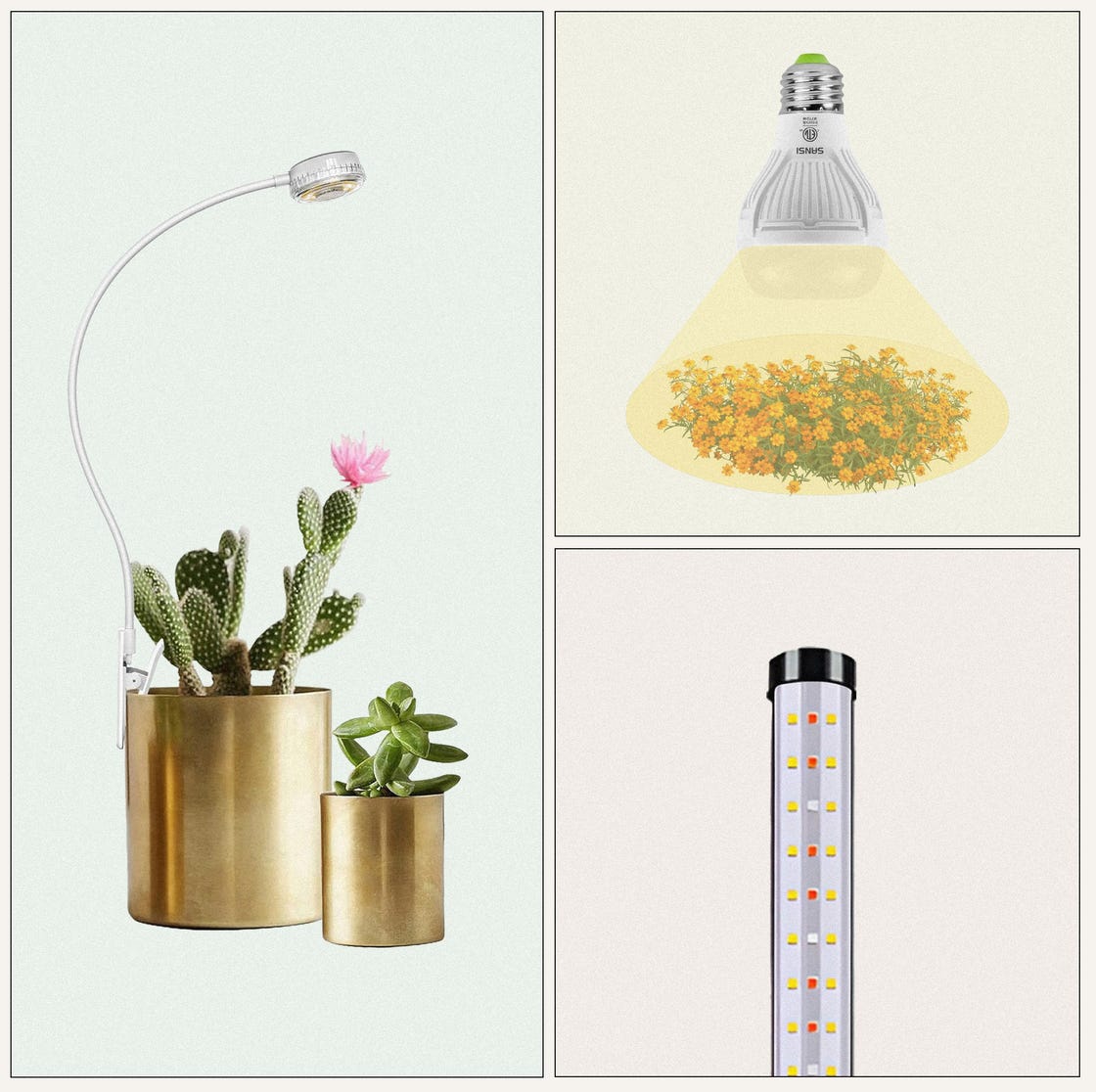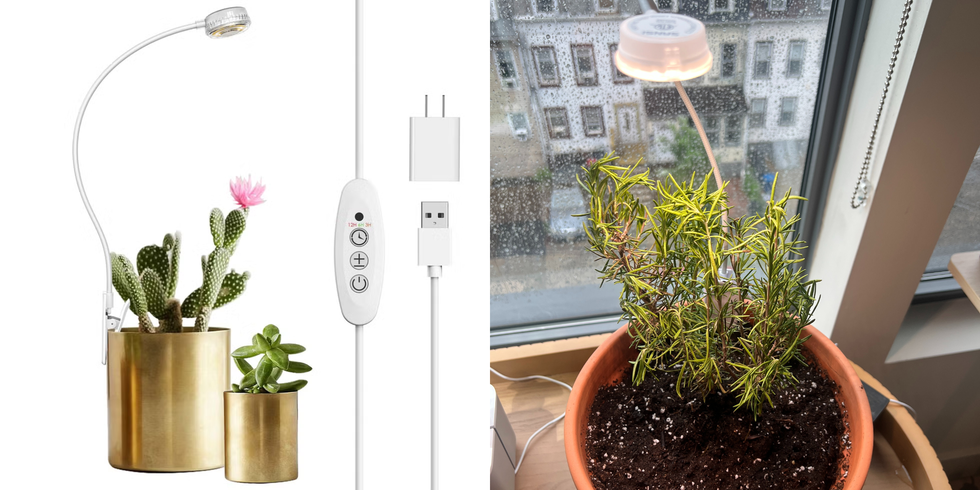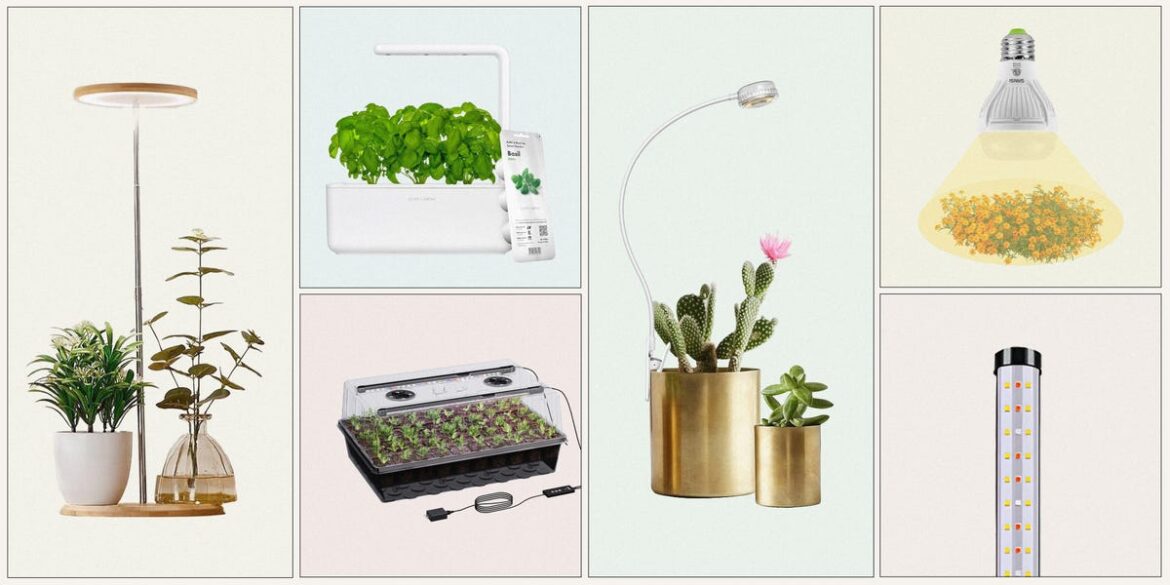6 Best Grow Lights for Indoor Plants of 2025
A grow light, for the uninitiated, is a supplemental bulb or lamp with full-spectrum LEDs. They often combine light colors that encourage germination, growth, fruiting, and flowering in your plants. They can be a godsend for low-light apartments, especially if you’re trying to grow plants that need lots of sun. They can make even your wildest gardening dreams come true. “A lot of people are living in more urban areas, more of a concrete jungle where you don’t necessarily have access to an outdoor space,” Weslie Etienne Pierre, owner of Wesleaf, says. “You can still grow tomatoes, you can still grow cucumbers, or whatever, with the use of grow lights in your space.”
To help you find the very best ones to buy, House Beautiful editors put them to the test in their own homes. We tried five different kinds, from an incubator that takes the frustration out of germination, to a clip-on option that reminds us of a book light. Plus, we asked experts like Pierre and Eierman for their top grow light shopping advice, so you can find the right one for your plants.
Check out our favorite gardening tools:” data-next-head/>Skip to Content
Every item on this page was hand-picked by a House Beautiful editor. We may earn commission on some of the items you choose to buy.

Soumi Sarkar
Best Overall Grow Light
SANSI Grow Light Bulb
Now 25% Off
Credit: Weslie Etienne PierreProsCan help surrounding plants grow as well
Casts a warm white glow
Fits well in any lampCons
Bulbs get hot quickly
If you’re looking for a grow light that won’t give your home a hospital aesthetic, look no further. This grow bulb is expert-recommended, and you can put it into the cute lamp of your choosing. It’s a bright bulb with a ring of LEDs spreading the light around, so it’s great for plants that have a medium–high indirect light requirement. Pierre places the 36-watt SANSI bulbs in a floor lamp in her office, where they cast a welcoming glow. “Typically when you think of grow lights, you think of a nursery with blue or purple lights, and it doesn’t give that vibe at all,” Pierre says. “It’s a nice white light that doesn’t interfere with the aesthetic of your space.”
Dimensions: 5.16″ W x 6.65″ H | Wattage: 36 watts
Advertisement – Continue Reading Below
Best Clip-On Grow Light
SANSI Pot Clip LED Plant Light
Now 15% Off
Credit: Courtesy of House BeautifulProsFour dimmable levels
Flexible neck
Clips onto many different pot sizesCons
Shorter cord length
For an adaptable light that can fit with any plant, a clip-on option is particularly versatile. McKenzie snagged one for her rosemary plant, so even as she re-potted it over time, the light could still work. “The only windows in my apartment are north-facing, which isn’t great for plants that like full sun,” McKenzie says. “I’ve been dying to grow fresh rosemary, which requires bright sun. Sadly, my Jersey City apartment can’t provide that, and I don’t have an outdoor space. To give it the best chance to grow possible, I clipped this SANSI grow light onto the side of its large terracotta pot. It gives it 12 hours of bright full-spectrum light a day, which helps me simulate the arid Mediterranean environment that it prefers.”
Dimensions: 1.5″ W x 12.8″ H | Wattage: 5 watts
Advertisement – Continue Reading Below
Advertisement – Continue Reading Below
How We Tested the Best Grow Lights
To track down the best grow lights for indoor plants, Associate Shopping Editor Janae McKenzie first reached out to House Beautiful editors and trusted gardening experts to find their tried-and-true picks. They’ve tested these grow lights in their own homes from a span of one month to several years, and used them to successfully keep houseplants alive or start vegetable gardens. McKenzie also learned about the features that make these grow lights better than all the rest, from dimmability that helps control or encourage growth to height adjustability that gives plants room to grow with the light. McKenzie then tested four different grow lights in her own home, on houseplants, veggies, and herbs to see how they worked up close.
What to Look for When Shopping for Grow Lights
To set your indoor garden up for success, you should keep the following things in mind while you shop for grow lights.
Plant Type: Certain kinds of plants really benefit from a grow light’s attention. Pierre recommends using them on dieffenbachias, cacti, or other succulents that like to drink up the sunlight. Monsteras, a medium-light plant, often grow larger and more fenestrated leaves under a grow light. It’s not just houseplants that benefit from grow lights, though. Eierman uses them year-round to grow microgreens, start vegetable seeds like tomatoes, zucchini, and eggplants. Even herbs like oregano and thyme do well with a grow light, though these are often slower and take more patience to grow.
Placement: Before you put that baby tree in a corner or on a bookshelf, think twice. “What people need to know is like the amount of light a plant gets is directly proportional to how much of the sky it can physically see,” Pierre says. “So if you stand where you’re going to put that plant in a corner, you might find that you can’t actually see the window. Therefore, the light your plant is getting isn’t the same as if you could see the sky.” If you’re really set on adding some green to that blank corner in your house, a grow light is what you need.
Bulb Type: LED bulbs are the superior option for grow lights. They stay cooler than ceramic or fluorescent bulbs, which is helpful to avoid burning the leaves of your plant. They’re also more energy efficient, according to Eierman, giving off more lumens per watt, so you’re getting more light in a compact package. The key feature to look for is a full-spectrum LED light. “Full spectrum or broad spectrum LED grow lights have a balance of blue and red light,” Eierman says. “Blue is is good for foliage growth and keeps plants kind of healthy, in terms of not getting too leggy. Red light helps stimulate vegetative growth, and then eventually flowering.”
Advertisement – Continue Reading Below
How Long Should You Leave Grow Lights On?
The wattage of your grow light is closely correlated to how long you should leave it on. “I use the 36-watt, and because they’re so intense, I can do six to eight hours, and that’ll be plenty,” Pierre says. “But if it’s like a 10 or a 14-watt, you’ll want it on for much longer to ensure that the plant gets a full day’s worth of light.”
Eierman says to always follow manufacturer recommendations regarding the duration of your grow lights. Knowing what your individual plant needs is always important. Her smaller microgreens need 15 hours a day, whereas her bigger vegetables only need 12 to 15 hours a day.
Why Trust House Beautiful?
At House Beautiful, we are experts in all things gardening and plant care, whether it’s assisting readers with finding the right indoor plants or sharing expert-curated tips for building the garden of their dreams. We’ve covered plenty of plant accessories like indoor growing systems, so we approached our search for grow lights with the same enthusiasm for finding ways to make gardening easier.
We also consulted expert input on what makes a great grow light, speaking with Weslie Etienne Pierre and Kim Eierman. Eierman is an ecological landscape designer and certified horticulturist. She teaches at the New York Botanical Garden and founded horticulture communications company EcoBeneficial LLC. Pierre is a plant stylist and designer as well as the owner of Wesleaf Designs and Decor, where she advises clients on how to use grow lights, self-watering planters, and a host of other gardening tools.
Watch Next

Advertisement – Continue Reading Below
Advertisement – Continue Reading Below

